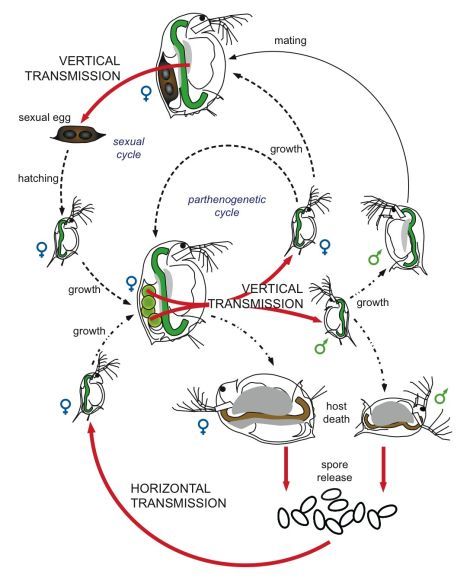From: Chapter 3, Some Parasites of Daphnia

NCBI Bookshelf. A service of the National Library of Medicine, National Institutes of Health.

Horizontal transmission occurs when infected hosts die and spores are released from the cadaver to the environment. Environmental spores can survive outside the host for several weeks to months (e.g., the entire winter) and can survive the temporary disappearance of their hosts. Infected females can transmit the parasite to their parthenogenetic sons and daughters through vertical (transovarial) transmission. Vertical transmission also occurs in the sexual cycle through the resting eggs. Finally, ephippia may serve as a vehicle for parasite dormancy and dispersal, with a new cycle of vertical and/or horizontal transmission starting after hatching. Red thick arrows, transmission of parasite; black broken arrows, growth of hosts; thin black arrow, interaction between two hosts (Vizoso et al. 2005). Drawing by Dita B. Vizoso.
From: Chapter 3, Some Parasites of Daphnia

NCBI Bookshelf. A service of the National Library of Medicine, National Institutes of Health.